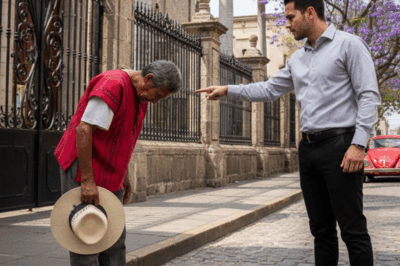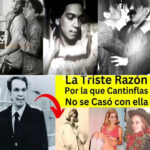In a dusty corner of the Hartford Historical Society, Dr. Sarah Mitchell, a photography historian, stumbled upon an ornate wedding portrait from 1903. The image seemed ordinary at first—an elegant Victorian ceremony with a serious-faced groom and his bride, Elizabeth, in a beautiful white gown. But something in Elizabeth’s expression caught Sarah’s attention, a subtle yet unmistakable smile, defying the norms of the era when smiling was considered improper for formal portraits. The smile hinted at something deeper, something hidden for over a century.

As Sarah examined the photograph under a magnifying glass, she realized that Elizabeth’s smile wasn’t one of joy but a mask hiding fear. The more she studied, the more she noticed an unusual hand position, leading her to research Victorian sign language and secret communication methods. To her shock, Elizabeth’s hand positioned a signal that, in Victorian times, meant “help” or “not what it appears to be.” Sarah’s investigation soon revealed a chilling story.
Sarah found that Elizabeth had been a secretary at Hartford National Bank, where a major embezzlement scandal had occurred in 1903. Elizabeth had uncovered discrepancies in the financial records that implicated her mysterious groom, Thomas Miller, a private detective hired to investigate the thefts. It turned out that Thomas had been behind the embezzlement all along, using his role to cover his tracks. Elizabeth’s wedding portrait wasn’t a celebration; it was a desperate attempt to document her situation before she was silenced.
The mystery deepened when Sarah discovered that Elizabeth had gone missing shortly after the wedding, and Thomas had died under suspicious circumstances, likely a suicide to avoid prosecution. Further research into the missing person report confirmed that Elizabeth had vanished just after uncovering Thomas’s scheme, and Thomas had hidden evidence of the fraud, including forged documents bearing Elizabeth’s signature.
Armed with this evidence, Sarah continued to piece together the story of Elizabeth’s bravery, uncovering her courageous attempt to leave a trail of evidence that would expose Thomas’s crime. Sarah’s research culminated in a public recognition of Elizabeth’s bravery, and the wedding portrait, once a cryptic mystery, was displayed at the Hartford History Museum with a plaque telling her full story.
Through this portrait, Elizabeth’s hidden messages were finally uncovered, shedding light on a tragic story of victimization and courage. Her smile, once misunderstood, became a testament to her determination to leave a legacy of truth. The ordinary photograph, kept hidden for over 120 years, was now a symbol of a woman who refused to stay silent in the face of corruption, ensuring her bravery would never be forgotten.
News
Ahora que tu esposo ha fallecido, ¡llora, haz tus maletas y no regreses nunca! » me lanzó mi nuera durante la cena. Mi hijo se limitó a sonreír y asentir. Me fui sin decir una palabra. Al día siguiente, fui al banco y
« Ahora que tu esposo ya no está, haz tu duelo, haz tus maletas y no regreses jamás », declaró…
“CÁLLATE, ANALFABETO” — Gritó LaS Profesora, A Hasta Que El Niño Judío Escribió En 7 Idiomas…
Cállate, analfabeto”, gritó la profesora Elena golpeando la mesa con la regla con tanta fuerza que el eco resonó por…
Ese hombre vendió su propia sangre para que yo pudiera estudiar. Hoy, que gano cien mil al mes, vino a pedirme dinero y no quise darle ni un centavo.
Aquel hombre vendió su propia sangre para que yo pudiera estudiar. Hoy, que gano cien mil al mes, vino a…
Durante 12 años, ella supo que su esposo le era infiel, pero nunca dijo una palabra. Cuidó de él, fue una esposa ejemplar hasta que, en su lecho de muerte, le susurró una frase que lo dejó helado y sin aliento: el verdadero castigo apenas comenzaba.
Durante doce años de matrimonio, Elena Ramírez guardó un secreto que nunca reveló a nadie. Para el mundo exterior, ella era la…
Los tres hijos se negaron a ayudar a su padre con una deuda enorme. Solo el más joven aceptó, y se lo llevó a vivir con él para cuidarlo. Exactamente un año después, una carta inesperada lo deja sin aliento…
Los tres hijos se negaron a ayudar a su padre con una deuda enorme. Solo el más joven aceptó, y…
«Quédate quieto, no digas nada, estás en peligro». La joven sin hogar jaló al magnate a un rincón y lo besó para salvarle la vida y el final…
«Quédate quieto. No digas nada. Estás en peligro». Las palabras cortaron la noche como un cuchillo. Ethan Cross, director ejecutivo…
End of content
No more pages to load












